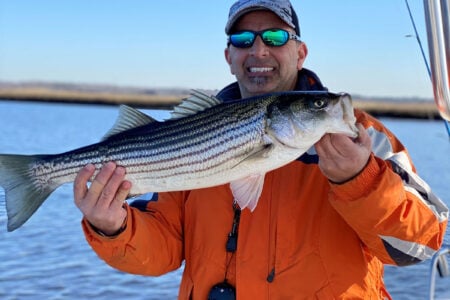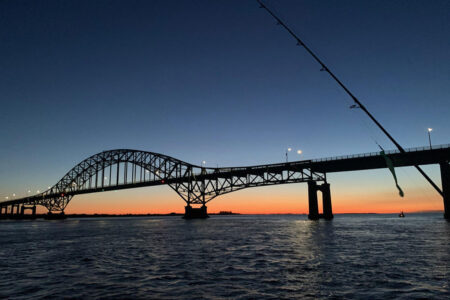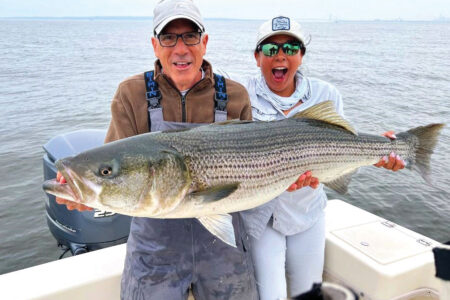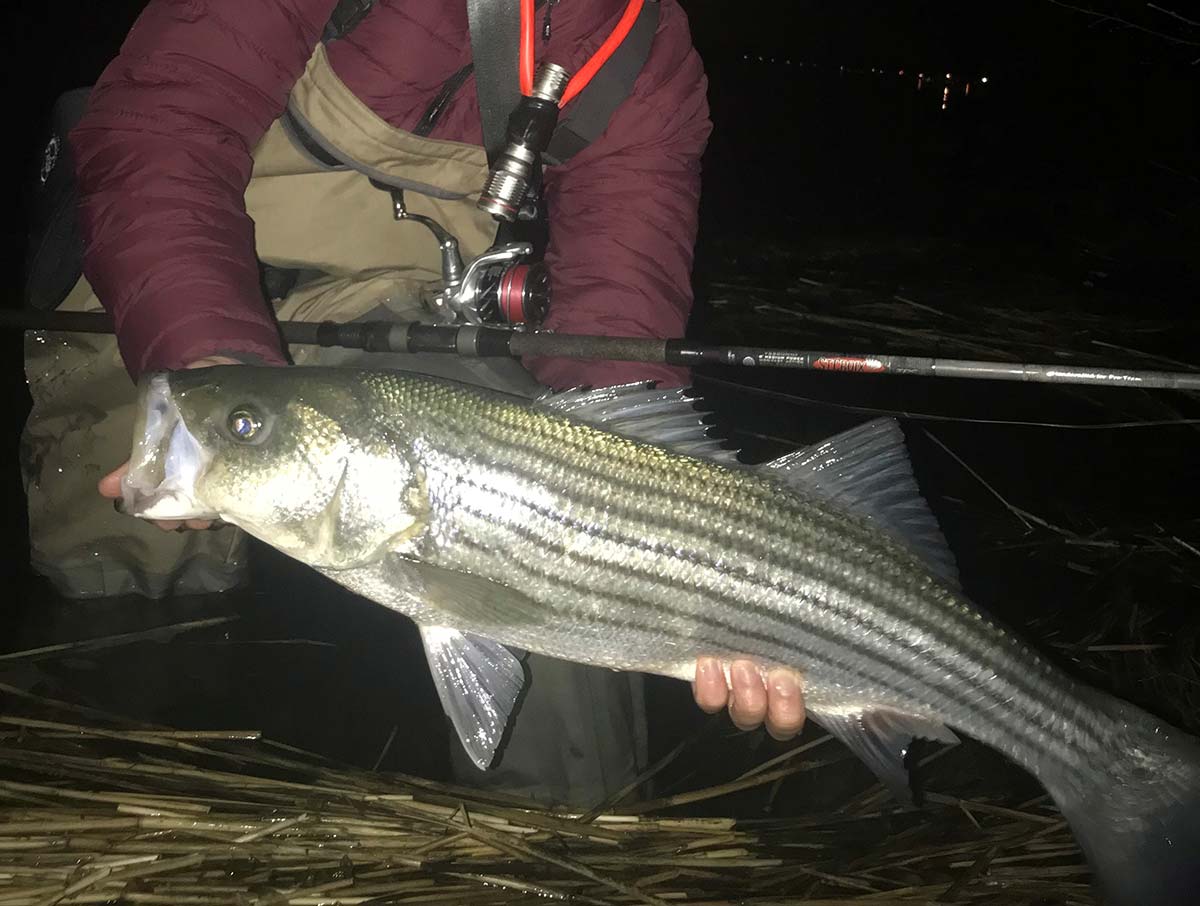
While the preparation is important, the game plan can be equally if not more important.
28- to 35-inch slot, 1 fish per person, April 15 – December 15
Hudson River north of George Washington Bridge: 1 fish per person 18 to 28 inches, April 1 – November
It’s that time of the year where all striper fanatics are filled with excitement and anticipation due to the thought of catching that first striped bass of the year. We’re all making sure our gear is in order, spools are filled, tackle bags stocked, rods and reels serviced, no holes in the waders, the list goes on. While the preparation is important, the game plan can be equally if not more important. I’m sure if you’re as excited as me and many others for this type of fishing to commence then you’re probably well prepared already. Let’s open this book and get into some details about how to make your first outing a successful one.
Finding The Prize
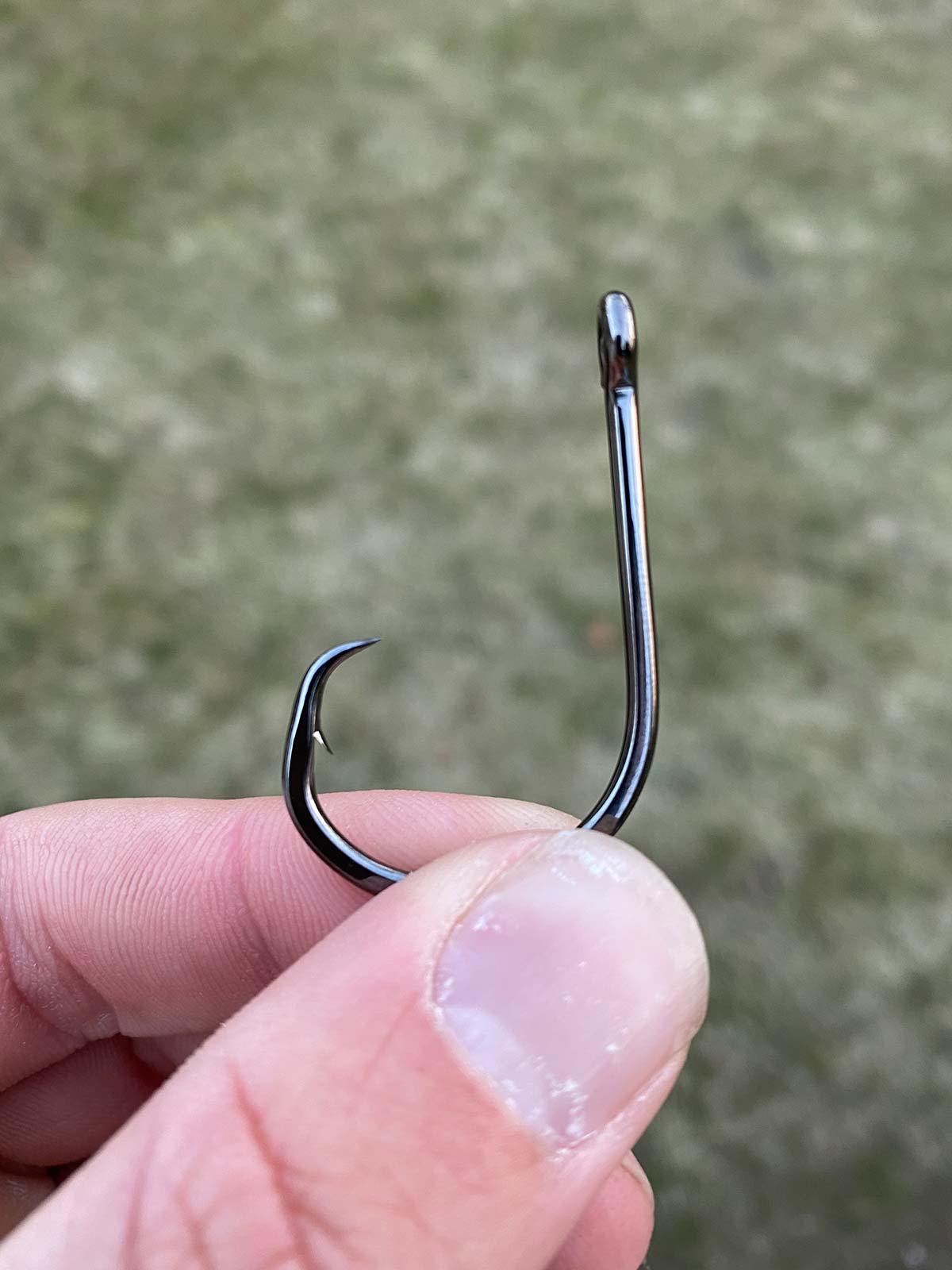
While I and many others enjoy spending time out on the water by itself, the main goal here is to find and catch fish. In the early spring, this can take a little honing in with the cold water temperatures. Luckily you can successfully locate fish without a boat during this period. This time of the year one of the main keys to successfully fishing bass is finding areas that tend to have significantly higher water temperatures. Don’t try going to different bodies of water with pool thermometers, testing the degrees of the water. It’s much simpler than that. In the early spring focus your efforts around the backs of muddy bays on outgoing water. The reason for this is as the sun beats down on the mudflats all day, it heats them to a significant degree. It’s enough of a temperature change to where bass will conjugate. Once the tide starts to drop out, these fish will become most active and feed in these backwaters aggressively. One of my favorite times to fish the back bays this time of the year is when I have direct sun beating on the water all day during an incoming tide. When the tide switches right at dark, the combination of the warm water and low light sets the stage for a prime striped bass feeding situation.
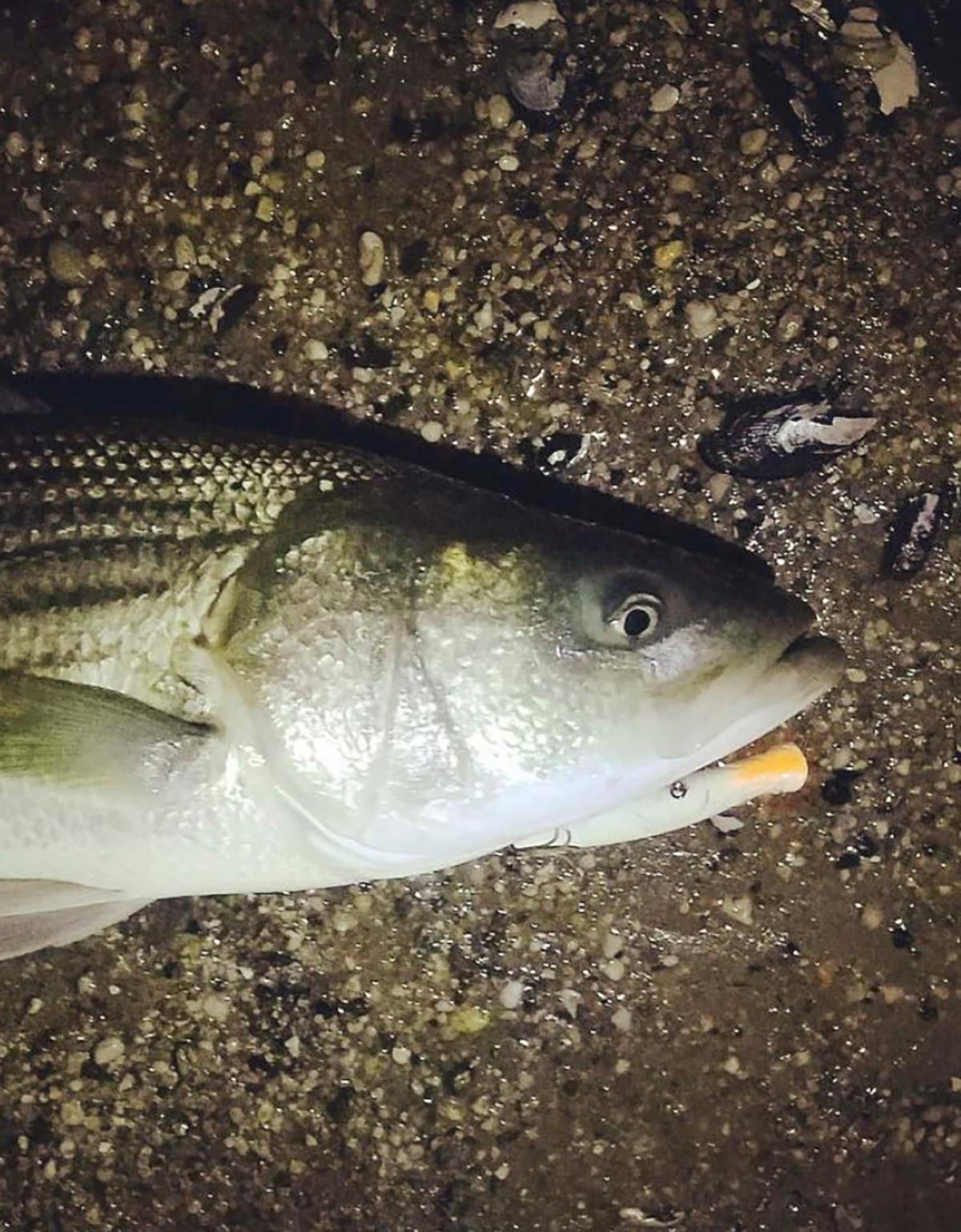
While water temperatures play a big role in how the bass feed in the spring, so does one other important factor; the amount of bait in the water. The way bait moves with the tide in the bays reinforces the idea to fish at the beginning of the outgoing tide. Try to think about it this way; as the tide moves in so does the bait. This bait can only go so far into a bay. For hours, piles of bait get pushed into the deepest parts of the bay. More tide equals more bait. Eventually, the fish that stripers are feeding on are all massed together. Once the tide starts to move out this bait is funneled all in the same direction. Awaiting them are the bass. This is another trigger that gets bass feeding aggressively. Combining the warmer temperatures and the unlimited buffet of bait for the bass can make for some seriously good fishing at times.
In this section, I use the word bay several times. Long Island has numerous bays along its coast which makes locating a specific back bay to fish a little trickier. Don’t worry though, throughout the month, each bay on Long Island will have fish at some point. My general rule of thumb is to start the beginning of the month to the west and as the month progresses make my way east. The migratory fish move from bay to bay as the temperatures increase. Don’t think that fishing is over in the spots you originated in once fish move. Sometimes a body of bigger fish can make their way into these locations in mid to late-April. Especially if they are following schools of bunker. I once had a trip where I brought a light tackle rod in April thinking I’d be tangling with schoolies since that was the class of fish the previous night. The majority of the night consisted of me battling high teen and 20-pound class bass that were feasting on adult bunker. Talk about an unexpected surprise. Also keep in mind that before the opener on the 15th, it is legal to catch-and-release bass. Once the season does open on the 15th, you may keep your limit of one fish per day between 28 to 35 inches.
Give Em’ What The Want
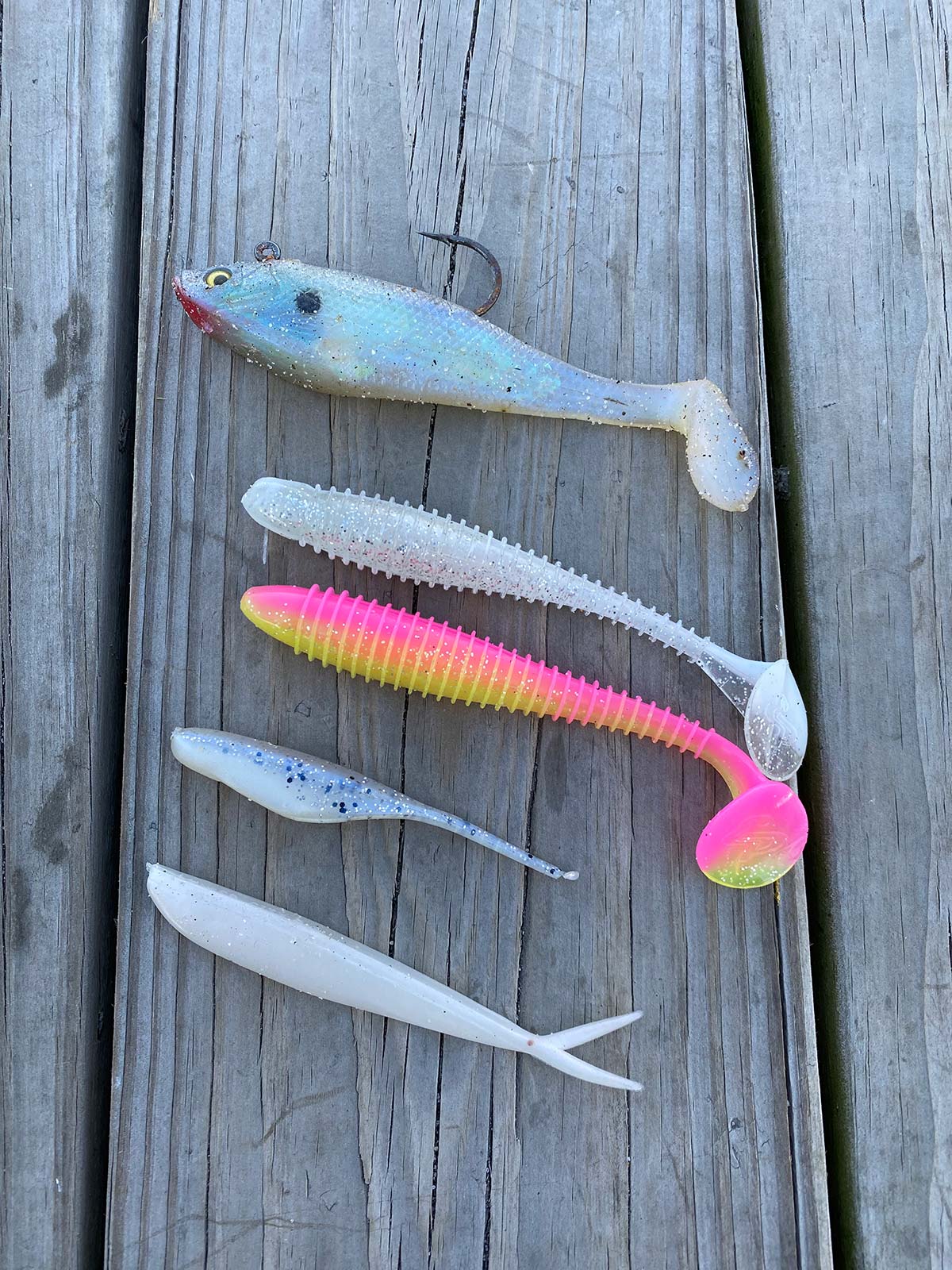
Overwhelming is the word that comes to mind when I think about the vast selection of striped bass lures on the market today. Honestly, most of them work too. When it comes down to it though the main thing behind every single one of these lures is a confident angler. I have lures that I love to use but my friends have never even caught on while on the other side of the coin, my friends cast lures that I doubt with all my mind but they have proved my thoughts wrong time and time again. Some of you may have a set of confidence lures already but for those of you that don’t, start to establish a group of these. This can be done with trial and error. A little word of advice for those that fall into either group though; have an open mind and don’t be afraid to try something new. Adding to your arsenal can help you excel in fishing for bass.
I’ll give you a little insight into my personal early spring plug bag and that should help those that are still wondering what to pack. When packing, I like to have a mix of swimming plugs and soft plastic lures. Small Daiwa SP Minnows, Bomber Long-A, Yo-Zuri Mag Darters and Cotton Cordel Redfins make up the bulk of the hard body swimmer lineup. Colors are personal preference but I seem to have good luck with bone, white, shiner and blurple colors. I do sometimes carry a larger profile lure like a Super Strike darter with me in the event that fish of a larger caliber are feeding on adult bunker. The other portion of my bag contains shads and finesse lures. A healthy amount of small tsunami or storm shads in pearl or bunker color along with Bass Assassins and Slug-Go’s with a light jig head are all that’s needed to entice a striper. Go as light as possible so that you can finesse the offering to the fish. Going light will result in better presentation, hence more fish caught.
Don’t Forget Bait!
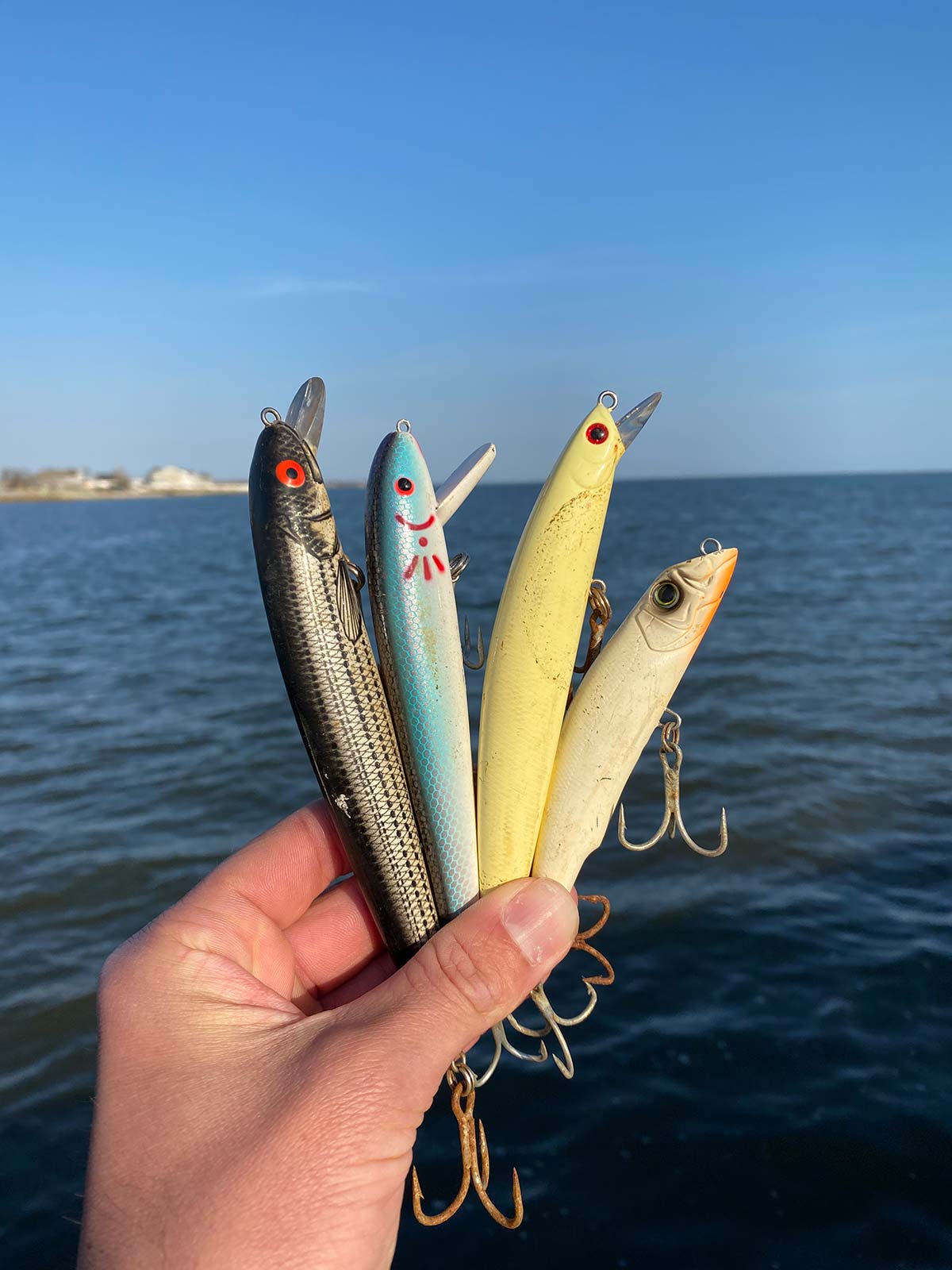
Almost a forgotten art when it comes to early season striped bass fishing on Long Island; anglers casting worms along the shores of bays and docks used to do very well years ago, and guess what? It still works and is done very often when fishing in the early season in New Jersey waters. Last season, while walking the shores of a back bay I came across an angler bait fishing in the same area I was throwing artificial lures. I didn’t catch a single fish but this angler caught eight bass right in front of me. He was using sandworms as his bait. This clearly demonstrated that the method of targeting bass is more forgotten about instead of ineffective.
If you plan on baitfishing for some early season stripers, keep in mind that you must use inline circle hooks when doing so. This law just went into effect for the 2021 season. A good size hook for early season bass fishing with worms is a 3/0 or 4/0. Use one of these in combination with a blood or sandworm and you will be surprised at the effectiveness of it. I like to rig these on a slider rig which some of you may know as a fishfinder rig. It consists of a barrel swivel with a 16-inch leader tied to a circle hook and an egg sinker to bring the bait down. The egg sinker is placed on the mainline coming off your reel. Tie the mainline to the barrel swivel afterward. This rig allows for the fish to freely pick up the bait and hook itself with the circle hook.
If you do happen to find bunker in the back bays, an effective technique is casting a weightless chunk and letting it sink to the bottom if you can get ahold of bunker chunks. Use a larger circle hook this time. A 9/0 size would suffice since you will be targeting larger fish in this scenario. Keep in mind when hooking a chunk you should have the hook point sticking through the bait to maximize the effectiveness of the hook.
Whether you like using bait or casting lures we can all agree the goal is the same; catching fish and spending time on the water. The spending time on the water part is straightforward. The catching fish part requires some effort. Both methods can be done in the same locations and by following the same tides. At certain points, each method can have effectiveness over another as I have witnessed countless times before. Remember, the way to sharpen your skill is to continue to work at it.
